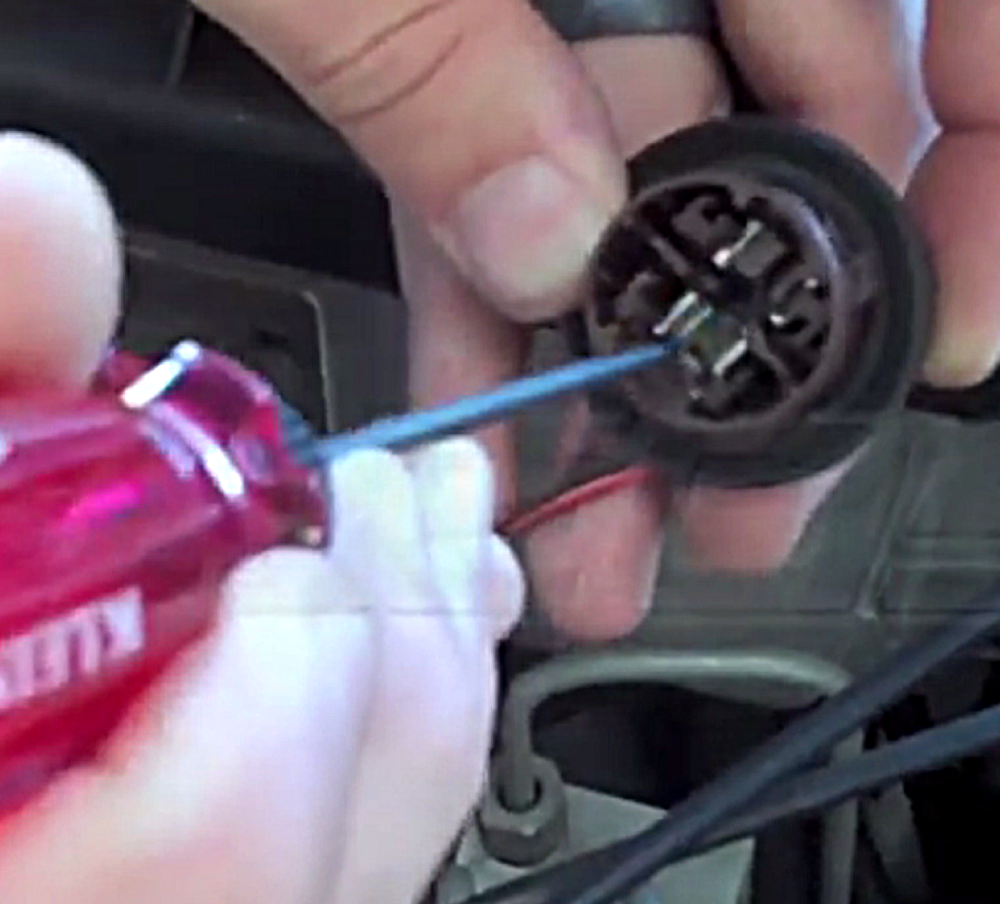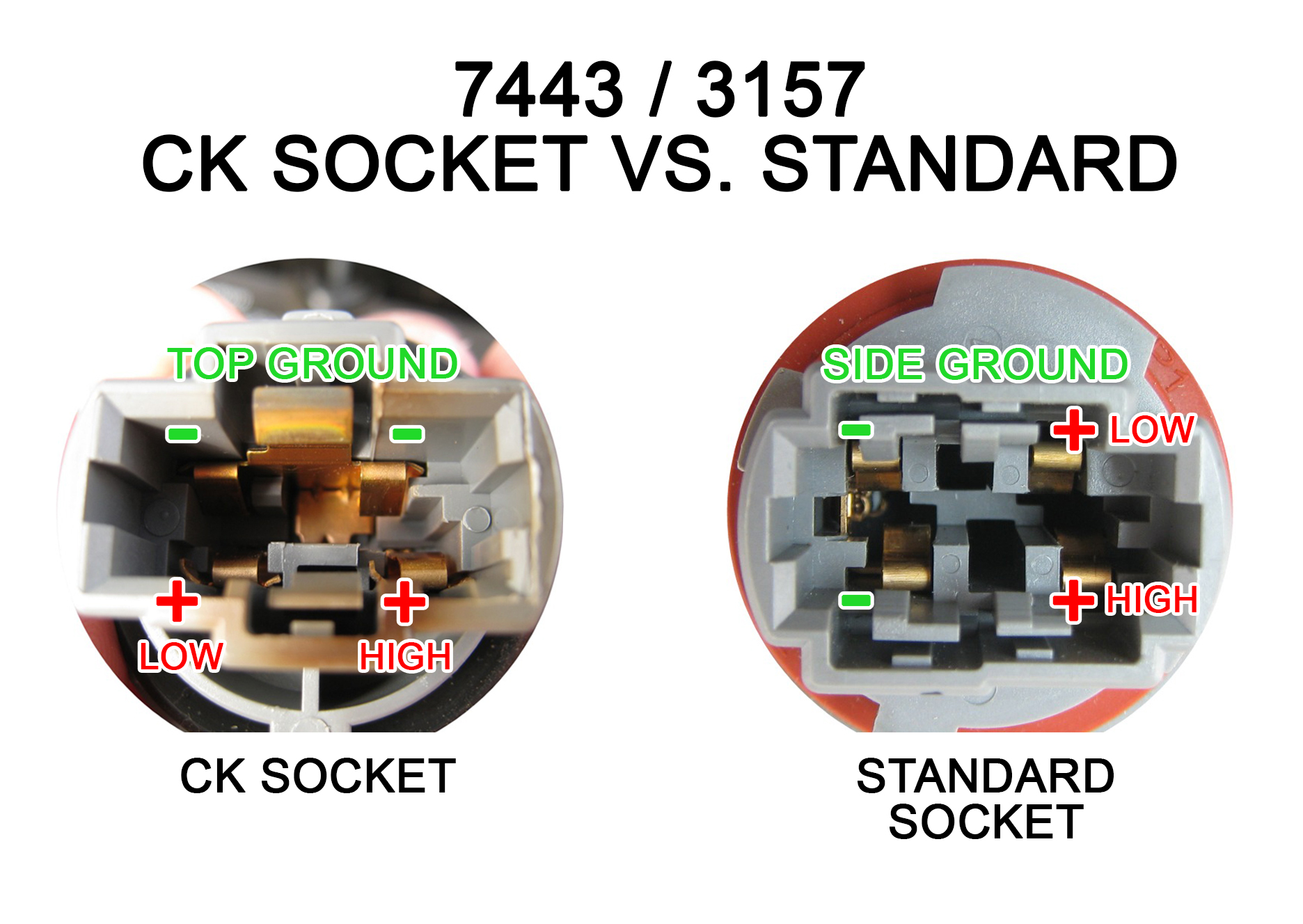

If your are looking to upgrade your vehicles 3157 or 7443 parking light, turn signal, or brake light bulbs with VLEDS you NEED to identify what TYPE of socket your car has. There are 2 socket types, Standard and CK.
What is the difference between the Standard and CK style sockets? The position of the ground contacts in the socket is the only difference. Externally they LOOK identical. What will happen if you use the wrong type of LED, i.e. A standard LED in a CK socket? The LEDs will not work properly or worse, they will blow your fuses that protect that specific lighting circuit. Follow the steps below to determine which car your socket has.Step 1: Search Google or YouTube to see what other owners of your vehicle are using
There is a vast amount of information on forums and on other websites when it comes to which parts or LEDs to use on specific vehicles. Sometimes the fastest thing to do is search the year, make, and model of your car with the the phrase "CK or standard socket." An example search would be: "2004 Subaru WRX CK or standard socket."
Step 2: Visually inspect the socket on your vehicle
If you are not able to find out the information using search engines, the next step should be to visually inspect the socket on your car. Remove the taillight socket and take a look at inside. Orient the socket so that it matches the image below. Standard sockets have both grounds on the left side of the socket and the high and low circuits on the right. CK sockets have the ground on the top and the high and low circuits below.

Step 3: Use a test light to verify the positions of the grounds
If you cannot find definitive information online about the socket style on your car or it's difficult to tell by looking at it, there is a way to TEST it. We put together a short video that will guide you through the steps involved with testing your sockets.
There is no rhyme or reason as to which car will use a CK socket configuration. The only way to know for sure is to follow our testing procedure shown in the above video.
Note: Test and identify your sockets BEFORE you purchase your VLEDS bulbs!

